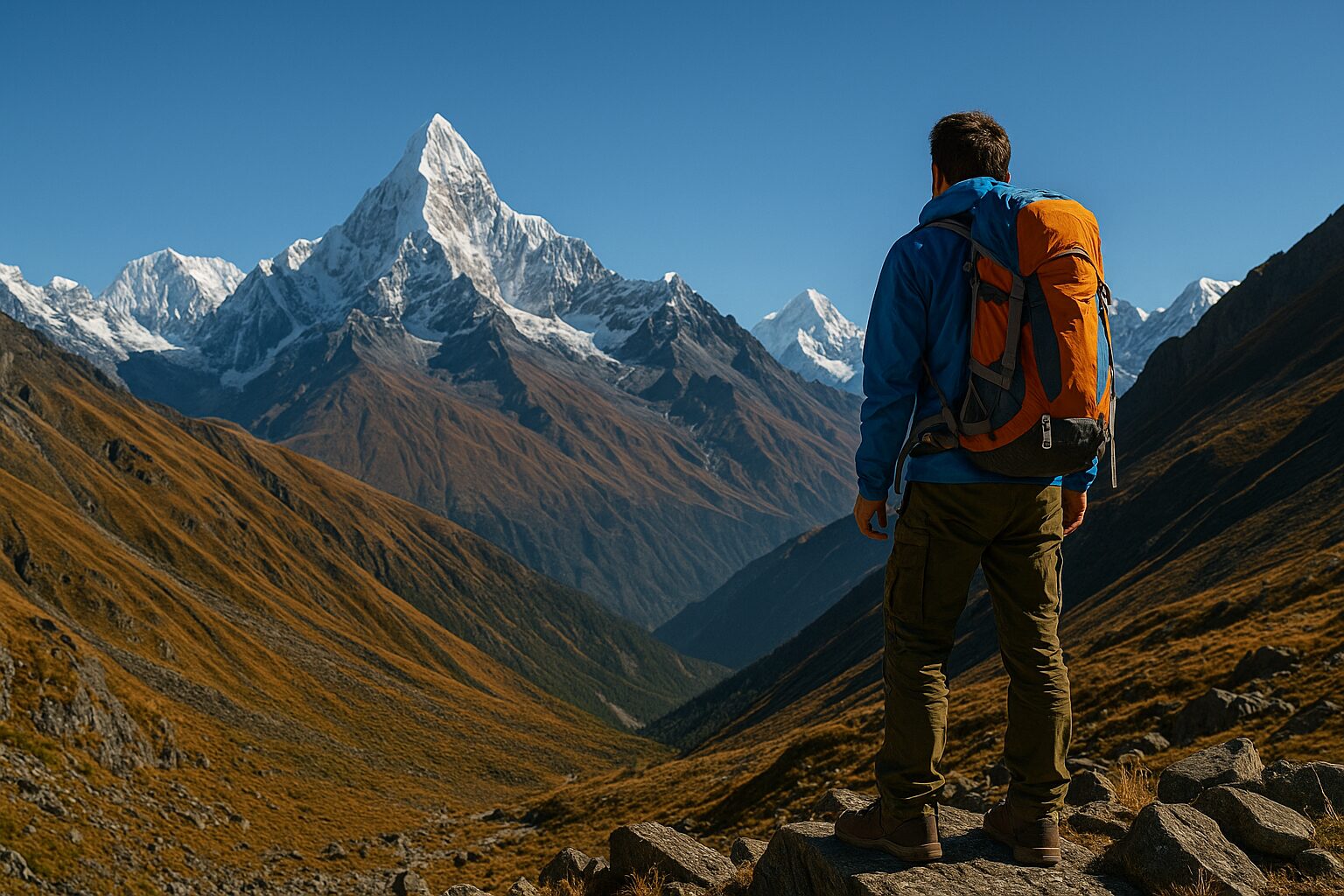Venturing into high-altitude destinations—whether hiking in the Andes, exploring the Himalayas, or skiing in the Rockies—can be awe-inspiring. But as the air thins and oxygen levels drop, many travelers face unexpected health challenges. From altitude sickness and dehydration to unusual digestive issues like diarrhea at high altitude, understanding these risks can make the difference between a memorable journey and a miserable one.
This guide is your go-to resource for navigating altitude-related health hazards, ensuring you can enjoy your adventure at elevation with minimal disruption.
What Is Altitude Sickness (AMS)?
Acute Mountain Sickness (AMS) is the body’s reaction to reduced oxygen availability at elevations above 2,500 meters (8,200 feet). The ams medical terms define it as a collection of symptoms—headache, fatigue, nausea, and dizziness—that typically appear within 6 to 24 hours of ascent.
Common Symptoms of AMS:
- Headaches
- Shortness of breath
- Nausea or vomiting
- Dizziness
- Loss of appetite
- Diarrhea with altitude sickness
- Fatigue or weakness
In medical abbreviations, AHRF (Acute Hypoxemic Respiratory Failure) and hypoxia altitude often relate to more serious stages of oxygen deprivation, though these are rare in healthy travelers at moderate elevations.
Unusual but Real: Altitude Sickness and Diarrhea
Though not as commonly discussed, diarrhea at high altitude is a genuine issue. Changes in altitude can stress your body, altering gut motility and potentially leading to symptoms similar to altitude change sickness or elevation sickness diarrhea.
Causes:
- Dehydration affecting digestion
- Hypoxia-induced stress on the intestines
- Changes in diet or local water
- Medication side effects
If you’ve ever asked, “Can high altitude cause diarrhea?” or “Can high altitude give you diarrhea?”, the answer is yes—it’s more common than most travelers realize.
Dehydration: The Silent Aggravator
High elevation dehydration is a critical concern. At altitude, your body loses water faster through respiration and increased urination, and you might not even feel thirsty.
Symptoms of Dehydration at High Altitude:
- Dry mouth and lips
- Fatigue
- Dizziness
- Diarrhea with altitude sickness
- Muscle cramps
- Confusion or irritability
Altitude and dehydration often go hand-in-hand, making it vital to drink plenty of water—even when you don’t feel like it.
High Altitude and Menstrual Health
Women may experience dysmenorrhea without menstruation or other changes in menstrual cycles when traveling to high elevations. Factors such as stress, exertion, and altitude hypoxia can delay or disrupt regular patterns.
Also, period cramping with no period is sometimes reported by female hikers and climbers. While typically not dangerous, staying aware and tracking changes is helpful.
Remedies and Medications for AMS
Several altitude sickness remedies over the counter and prescription options can help prevent or reduce symptoms:
Over-the-Counter (OTC) Medications:
- Ibuprofen or aspirin: For headaches
- Antacids: For stomach discomfort
- Anti-diarrheals: Especially helpful for altitude diarrhea
- Electrolyte powders or tablets: Crucial for hydration and recovery
Prescription Options:
- Acetazolamide (Diamox): Helps your body acclimate faster
- Dexamethasone: A steroid often used for severe AMS cases (especially by mountaineers)
Climbers dexamethasone is commonly carried by seasoned trekkers for emergencies at extreme altitudes.
Prevention Tips: Stay Ahead of AMS
The best treatment is prevention. Here’s how you can reduce the risk of AMS and its uncomfortable companions like high altitude diarrhea or altitude sickness dehydration.
Practical Tips:
- Ascend gradually: Avoid rapid gains in altitude.
- Hydrate constantly: Combat altitude and dehydration with regular fluid intake.
- Eat light, easily digestible foods: Prevent altitude diarrhea and reduce stomach load.
- Avoid alcohol and caffeine: They contribute to dehydration and altitude sickness.
- Use electrolytes for altitude sickness support: Replace lost minerals efficiently.
- Rest when needed: Don’t push through fatigue.
When to Seek Medical Help
If symptoms worsen despite rest and hydration, it’s time to descend or seek medical attention. High altitude shortness of breath, confusion, or inability to walk in a straight line may signal severe altitude illness, requiring immediate action.
Always prioritize safety over summit goals. No view is worth risking your health.
Best Travel Practices for High-Altitude Adventures
Whether you’re trekking through Nepal, exploring La Paz, or visiting Machu Picchu, altitude should be factored into your travel planning.
Before You Go:
- Consult your doctor about altitude medication OTC or prescription
- Train with cardio workouts to improve endurance
- Acclimate gradually if possible
While Traveling:
- Monitor for diarrhea at high altitude
- Stay warm and protected against the elements
- Be mindful of your dehydration altitude sickness risk
Pro Tip:
Always travel with a basic health kit that includes electrolyte tablets, OTC AMS medicine, anti-diarrheal tablets, and hydration salts.
Conclusion: Stay Elevated—Safely
Exploring the world’s highest places can be life-changing. With the right awareness, preventive care, and response strategies, you can conquer high-altitude destinations without falling prey to discomfort or danger.
From understanding what does AMS stand for medically to identifying early signs of altitude sickness and diarrhea, knowledge is your best climbing partner.
For more travel safety guides and tips on staying well in the world’s most extreme environments, stay inspired with The Inspiring Insight.




